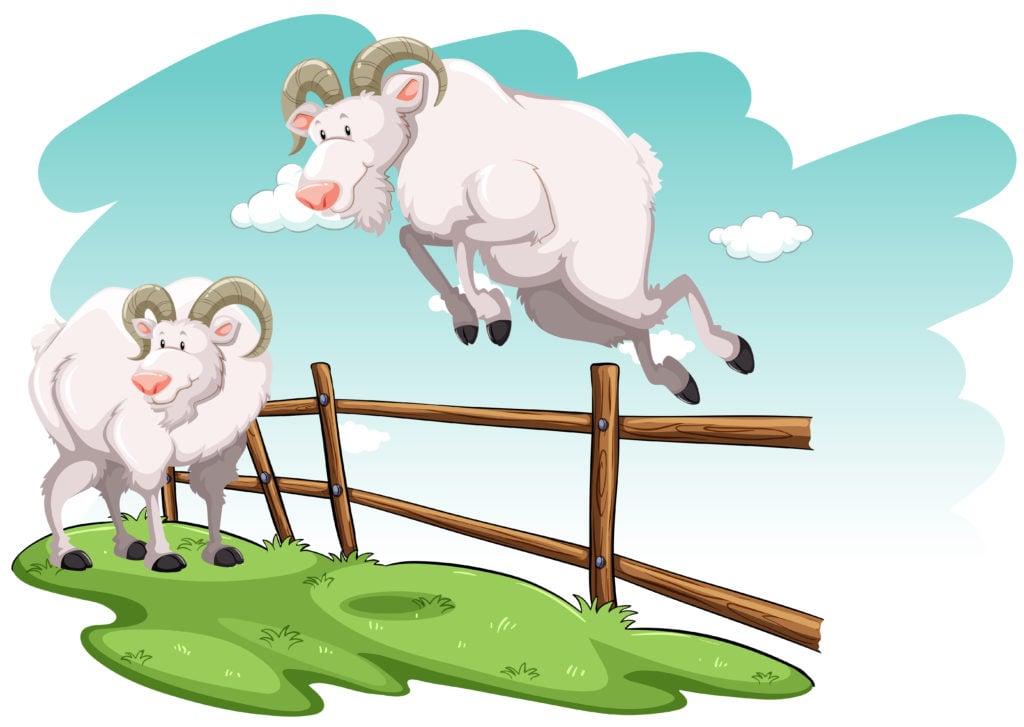And all the tithe of the herd or the flock, whatsoever passeth under the rod, the tenth shall be holy unto the Lord.” (Leviticus 27:32)
This Shabbat, I was called up to the Torah for the last aliyah (lit. “ascent”, meaning the reading from the Scroll) of the book of Leviticus. This portion talks about tithing animals, giving the precise procedure for doing so – every animal is released from a pen one by one while being counted – one, two, three, … , ten. The tenth animal is touch by the rode and consecrated as the ma’aser – tithe.
The Torah states that every tenth animal is holy unto G‑d. What is the state of the animals before counting? They have two possible states: (1) chulin, i.e., “not sacred” and (2) ma’aser, i.e., “sacred.” Before we count the animals one by one, we do not know which is going to be designated as sacred and which is not. Thus, every animal could be, in principle, found sacred (ma’aser) or not sacred (chulin). This means all animals are in the state of superposition of ma’aser and chulin.
Our animals, before being counted, are each like a Schrödinger cat who is in a blurry state of superposition of being alive and dead. So too, the animals are in a superposition of being ma’aser (sacred – designated for sacrificial purposes at the Temple) and chulin (not sacred, permitted for consumption or any ordinary use).
As we know, an experiment collapses the wave function and removes the uncertainty. For example, when it comes to the Schrödinger cat, when the observer looks inside the box, he or she discovers the cat in the definite state of either being alive or dead. Similarly, once the animals are counted and the tenth animal is identified and consecrated, the wave function is collapsed, the tenth animal becomes sacred (i.e., consecrated for the sacrifice in the Temple in Jerusalem), and the other nine are chulin – permitted for ordinary use.
As an aside, Masters of Kabbalah, tell us that the counting till ten corresponds to the ten sephirot, with the number 10 representing the sephirah of Keter. (This is why a first-born animal, which also corresponds to the sephirah of Keter and which is also consecrated to G‑d, could be used for ma’aser.)
The Mishnah (tr. Bekhorot 9) and the Babylonian Talmud (Baba Metzia 6b-7a) discuss an interesting case when one of the counted animals jumps back to the pen and gets mixed with other uncounted animals. There are two scenarios here: (a) the animal that jumped was among the first nine counted animals and, therefore, was chulin (unconsecrated); and (b) the animal that jumped was the tenth and, therefore, was ma’aser (consecrated). In the first scenario, all animals in the pen become chulin like the animal that jumped back. In the second scenario, all animals become ma’aser and are unfit for use until they develop some disqualifying blemish (a mum). As we see, in both scenarios, animals in the pen assume the status (albeit besofek i.e., in doubt) of the animals who jumped back into the pen. How are we to understand this?
Quantum mechanics comes to the rescue. Let us analyze this case from a quantum-mechanical perspective. As we said before, the animals in the pen (uncounted) are in the state of superposition of chulin and ma’aser. The animal that jumps back into the pen gets “mixed” with the rest of animals, which in quantum-mechanical parlance means it gets entangled with the other animals.
Let us recall that when two subatomic particles, say electrons, are entangled, their states are correlated. If they were both in a state of superposition, say spin “up” and spin “down,” collapsing the wavefunction of one electron automatically collapses the wavefunction of the other electron and fixes spins of both particles in a definite (albeit opposite) state.
Returning now to our muttons, the counted animal is entangled with the uncounted animals who are in the state of superposition. The wavefunction of the counted animal is collapsed (it was collapsed when the animal was counted). Consequently, this animal automatically collapses the wavefunctions of all other animals it is entangled with who all assume the state of the counted animal. This is why, if the animal that jump was chulin, all animals become chulin; and, conversely, if the animal that jumped was ma’aser, all animals become ma’aser – the riddle is solved.
